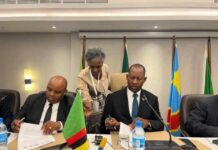Zambia expects to triple power output to 6,000 megawatts (MW) in 2 years through expansion of solar energy by foreign investors, the head of its investment agency said.
Erratic electricity supplies have hit mining in the continent’s second biggest copper producer, where the bulk of its generation capacity of 2,200 MW of power is water-powered.
The power problems and copper price slide have driven the kwacha currency to record lows amid a selloff in commodity-linked currencies as top copper consumer China’s economy has slowed.
Zambia Development Agency (ZDA) Director General Patrick Chisanga said he had held “very positive” talks with an unnamed German company aiming to invest $500 million in a solar power plant but did not disclose its planned location.
“It is planned that they could produce about 400 megawatts of power in two steps,” Chisanga told Reuters.
“This is still at discussion stage but the investor is very keen and we envisage that early in the first quarter of next year we should see some serious development on the ground.”
Another group of investors from Italy were looking to set up a solar plant in the Lusaka South multi-facility economic zone and two others in the Western and Northwestern provinces.
“The proposals they put on the table suggest to me that these are very serious investors and they have the capability as well as the financial capacity to invest,” he said, without giving details.
Added to that, power generation from Zambia’s Kariba power stations has dropped due to low rainfall in the previous season, forcing Zambia to implement power blackouts.
“This has been a wake up call for us. It has taught us that we need to diversify our sources of energy instead of relying on hydro which in turn relies on a good rainfall every year,” he said.
A number of new investments, including that by Africa’s richest man, Nigeria’s Aliko Dangote, whose firm has opened a cement plant, were setting up their own power plants and aiming to feed any surplus into the national grid.
The ZDA had also issued an investment licence to Sunbird Investments Ltd which was looking to put up a $150 million biofuel plant using cassava, Chisanga said.
“The totality of all this should help us to ramp up our production of power to the levels that we need to get to which is ultimately about 6,000 megawatts,” Chisanga said. (Writing by Stella Mapenzauswa; Editing by James Macharia and William Hardy)

 JOIN DRIVERN TAXI AS PARTNER DRIVER TODAY!
JOIN DRIVERN TAXI AS PARTNER DRIVER TODAY!











